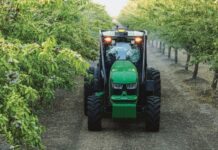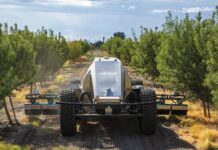
Vignerons often worry if organic viticulture will cost more. Will there be lower yields, reducing profits?
Advocates for regenerative organic viticulture generally make the case for it by talking about the planet, and about health. How we need to absorb more carbon in the soil. How spraying chemicals can have long-term health implications.
But let’s be honest: In early days, it’s easy to confuse regenerative organic with its main advocates at the Patagonia clothing company (effective, concerned about the outdoors, but priced beyond the means of the everyday worker).
Grgich Hills Vice President and Winemaker Ivo Jeramaz rejects this idea. He is a true believer; he will not feed conventionally grown produce to his family. But he also believes that in the long run, regenerative organic viticulture makes sound economic sense. This combination of advocacy and practicality fits right in with Grgich Hills’ history.
Roots
Grgich Hills was founded in 1977 in the wake of one of the most famous contests in wine history. Mike Grgich was the winemaker for Chateau Montelena, and he made the Chardonnay that won the Judgment of Paris tasting in 1976. But Grgich chafed at working for others and wanted his own winery. He formed a partnership with coffee magnate Austin Hills (many people think the winery name is geographic, but it’s not), and a new winery was born.
Grgich was originally from Croatia and had escaped the Communist regime in Yugoslavia. He learned much from his early experiences: Work ethic and thriftiness were at the top of the list. And land ownership, as Grgich saved his pennies to buy up Napa Valley vineyard land when it was still affordable.
He often said, “Every day, do your best, learn something new, and make a friend.”
Grgich brought his nephew Jeramaz, an engineer, over from Croatia in 1986. He put Jeramaz to work right away, starting as a cellar rat. Jeramaz worked hard in the family tradition and gradually took over more winemaking and viticulture responsibilities. It was largely Jeramaz’s idea to move Grgich Hills into organic farming, but Grgich was an easy sell as he always cared most about grape quality. Jeramaz pushed the envelope further by making Grgich Hills one of the first premium Napa Valley wineries to convert to biodynamics.
Grgich Hills is indeed a premium winery. Grgich, being European, was a train fan and an early advocate of the Napa Valley Wine Train. Grgich Hills is its only winery stop, meaning Grgich Hills is the face of Napa Valley for many visitors. The winery owns more than 360 acres of Napa Valley vineyards, including 81 in the valuable American Viticultural Areas of Yountville and Rutherford. Still arguably best known for Chardonnay, it makes a range of varietals now, including one of the county’s best Zinfandels, which Grgich would have proudly told you is a grape from his native Croatia where he also opened a winery in 1996 that is still making Plavac mali (Zinfandel) today.
Grgich lived 100 years, showing the virtues of hard work, clean living and wine drinking before passing in December 2023. He had already passed on control of the winery some years before; his only child, daughter Violet, runs the business end, and Ivo runs the winemaking and viticulture side.
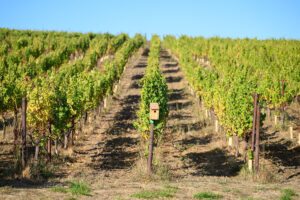
Business End of Regenerative Organic
Ivo is all in on regenerative organic, and in an interview for Grape & Wine, he explained it not in terms of what it does for the soil, but what it does for the business end.
“Let’s start off in numbers,” Jeramaz said. “Our accountant accounts for 140 wineries in Napa Valley. Every year, he gets our financial books ready. They create a scorecard and compare us to the average of those wineries. For the 2023 growing season, the average farming cost for those 140 clients [is] $15,000 per one acre. Our costs were $11,000. Multiply by 360 acres.”
And Jeramaz said Grgich Hills does not have to replant as often as other wineries because its vines are healthier.
“Regenerative organic for us is more profitable,” Jeramaz said. “So many of these new owners are losing $5 million a year because they made billions somewhere else. Losses in the wine business are offsetting their business. In our case, we need to make money, not lose money. It’s more profitable because we’re not buying anything. We don’t even have to buy compost.”
Instead, Jeramaz brings a flock of sheep into the vineyard twice a year to eat cover crop and convert it on the spot into fertilizer.
“Now we are trying to plant the cover crops where grass only grows 18 inches,” Jeramaz said. “If the cover crop doesn’t grow up into the grapes, we don’t care what it is. The rows are protected from excessive heat. Our costs are about $140 per acre to deal with grass around grapevines. It’s a fraction of other people. They use Roundup two or three times, and they till two or three times. All to keep other plants from using nutrients and water. That’s not natural. They are spending money on this, and then they have to use fertilizer because they don’t have enough nutrients in the soil.”
Jeramaz said he monitors the amount of soil organic matter (SOM) since going regenerative organic, and his vineyards have shown an average increase of 0.9%.
“If you research scientific papers, you will find out scientists think it is not possible to increase SOM. That’s only true when you use fertilizers,” Jeramaz said.
A key concept of regenerative organic is to not till the soil to allow microbial life to flourish.
“We spend less because we eliminate these things,” Jeramaz said. “In the U.S., we spend over $100 billion on nitrogen fertilizer. In the air, in the sky, over every acre, there are 70 million pounds of nitrogen. Plants cannot just grab it, but microbes can. All you have to do is be kind to microbes. They grab it and make nitrogen available to plants. Why would you spend money on nitrogen when microbes can do it for free?
“These are not fairy tales,” Jeramaz continued. “This is the way farming has worked for thousands of years. We are not inventing anything. In summer, all this aboveground cover crop gets dry. We mow it, and soil is protected. On a 90-degree [F] day, the neighbor’s vineyard which is clean is 145 degrees in soil. You kill all microbes that way. You lose moisture in soil.
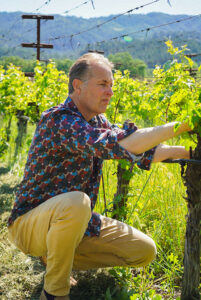
“In 2022, September 4 to 5, we had the temperature of 118 degrees in Yountville and Rutherford for a couple days and over 108 for almost the whole week,” Jeramaz said. “People who tilled lost a lot of grapes because it was 175-degree soil. Hot air was rising and cooking their grapes. Some people had nothing but seeds and skins, and it was completely burned. Any time you see adversity like that, we have a savings because our vineyard is far more resilient. If there’s a 7-inch downpour, it doesn’t matter to us because our vineyard can absorb it. Our soil holds water. In California, there is a huge shortage of water. Pretty soon, the government will start putting meters on wells. You won’t be able to just pump whatever you want. It’s very important to be able to catch all that rain when it falls. If you till soil as soon as you get rain, it cakes, and that water runs off. Maybe 70% of that water ends up in the Napa River.”
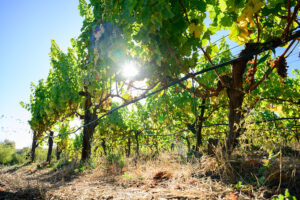
If that’s not enough financial benefit for you, consider this: Jeramaz said his regenerative organic vineyards continue to get decent crops even when infected by viruses like leaf roll and red blotch that cause other vignerons to replant. His vineyard in Yountville is 64 years old, making it one of the oldest in Napa Valley, and it’s planted with inefficient 10- by 8-foot spacing. Yet it yielded 3.2 tons/acre of Cabernet Sauvignon in 2023, which Jeramaz says was about 1 ton/acre more than the average Napa vineyard.
“Through this farming, you create immunity,” Jeramaz said. “Not that you kill viruses. You can’t kill viruses. UC Davis will never find a cure for viruses. The only hope is for resilient vineyards that can handle viruses. In Rutherford, about 20% of our vines have leaf roll. We pick them separately from clean plants. We pick clean plants at 25 brix and 24 for leaf roll. We have some malic acid, which is a measure of chemistry. Only difference is about a half degree of alcohol, and that’s OK because we don’t want high alcohol.
“I drive through Napa and see vineyards that are being pulled after eight years. I won’t name names,” Jeramaz continued. “If you have to replant 20% of your plants every year, you won’t survive. You have to replant your vineyard every five years, you’re dead. [Regenerative organic], this is the only way to survive.”









